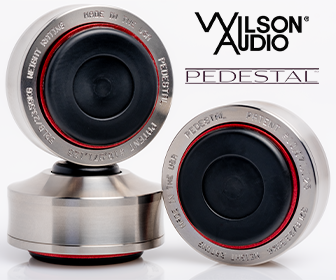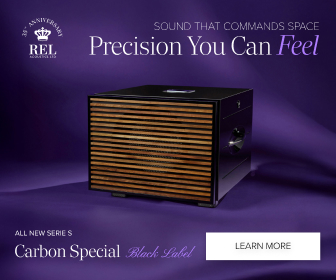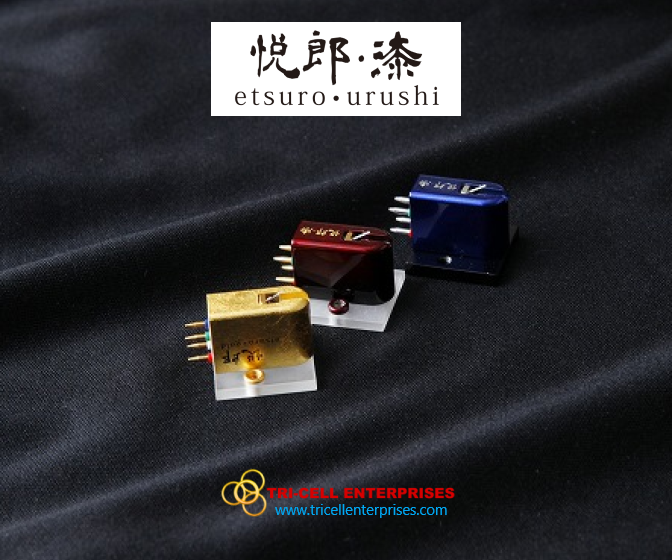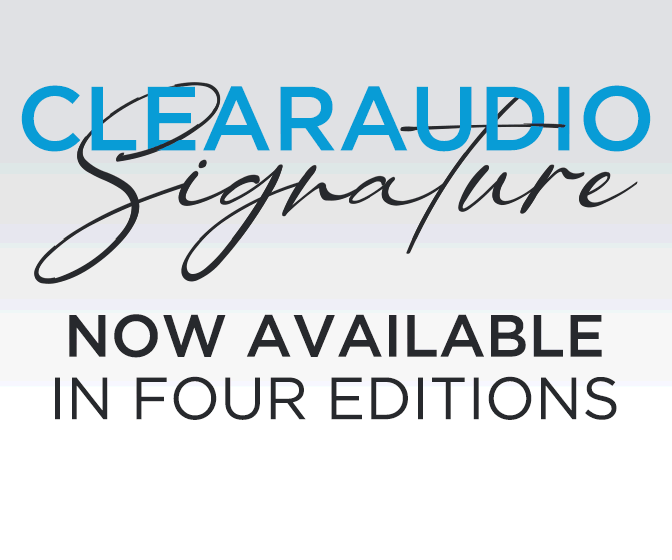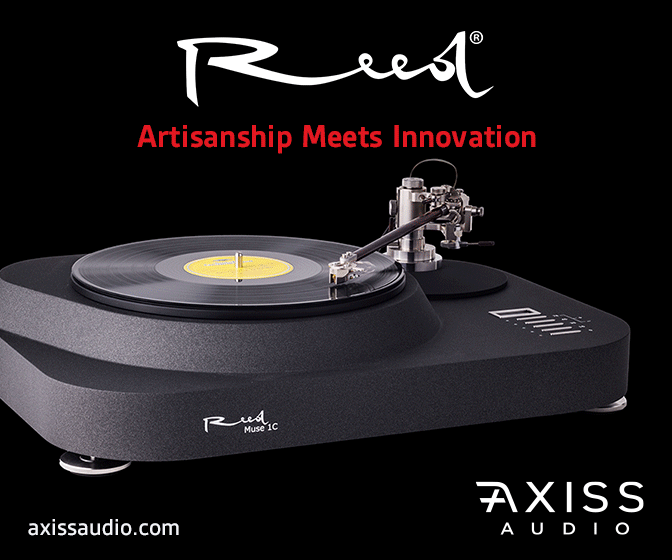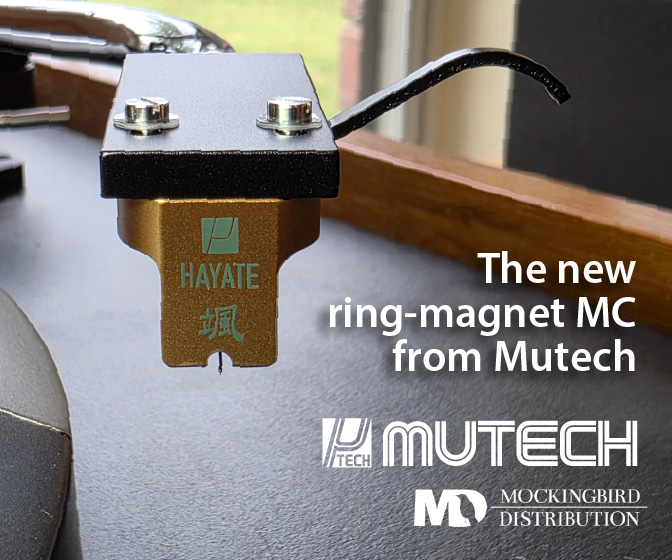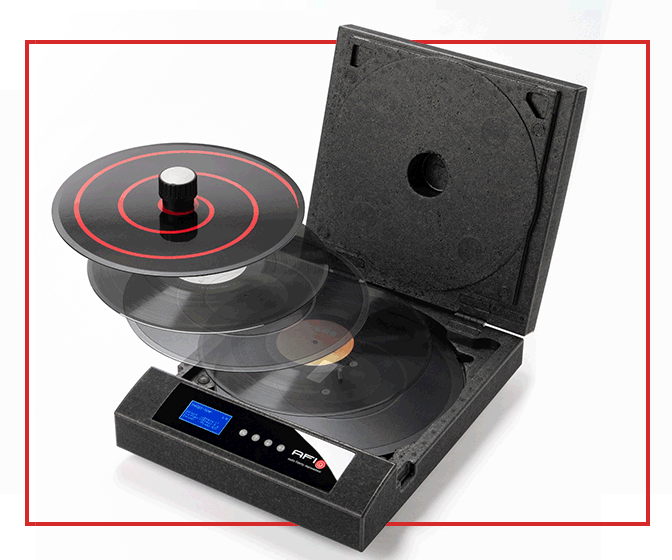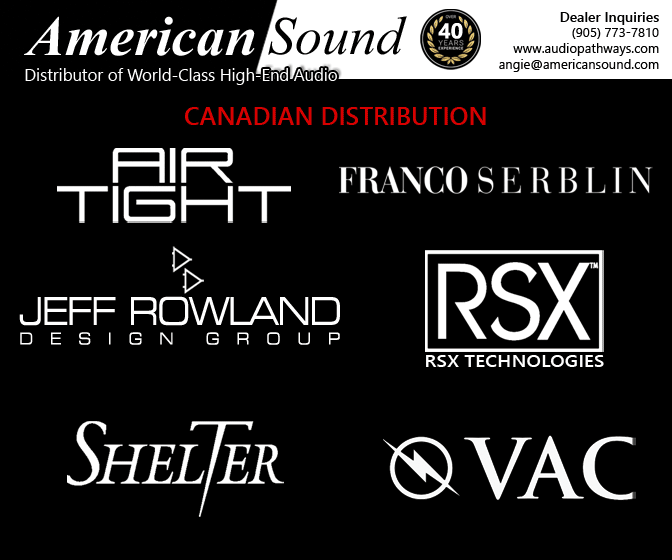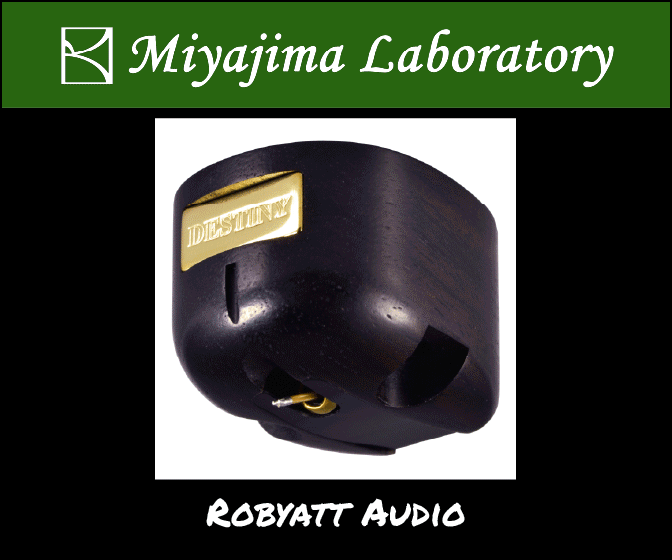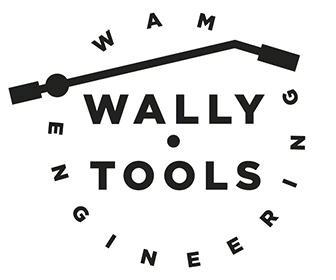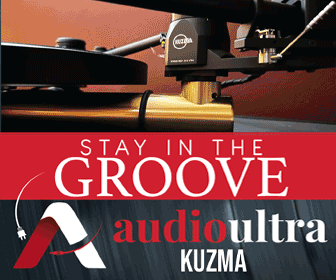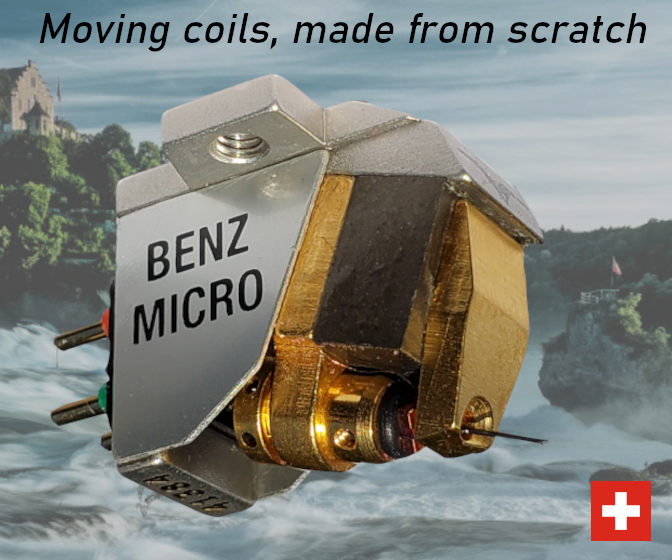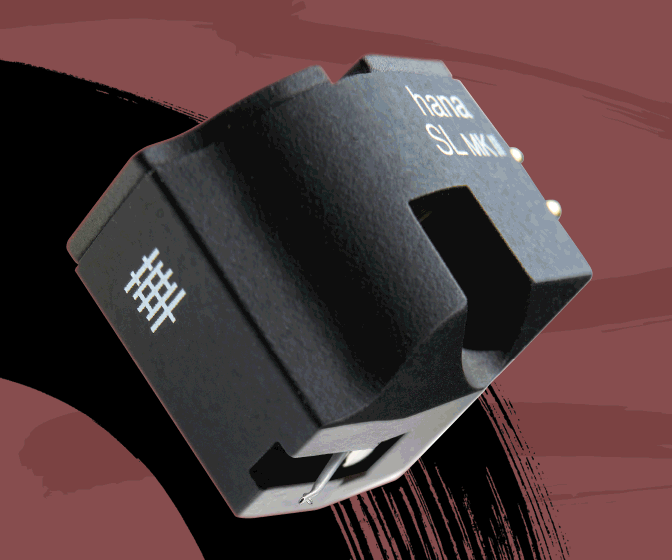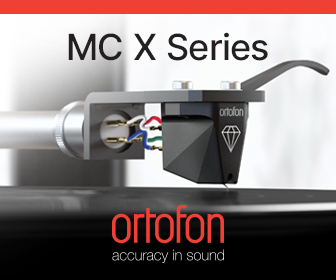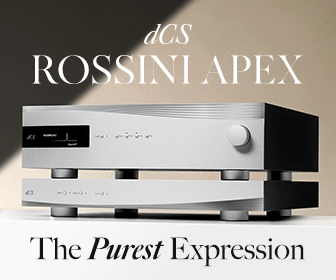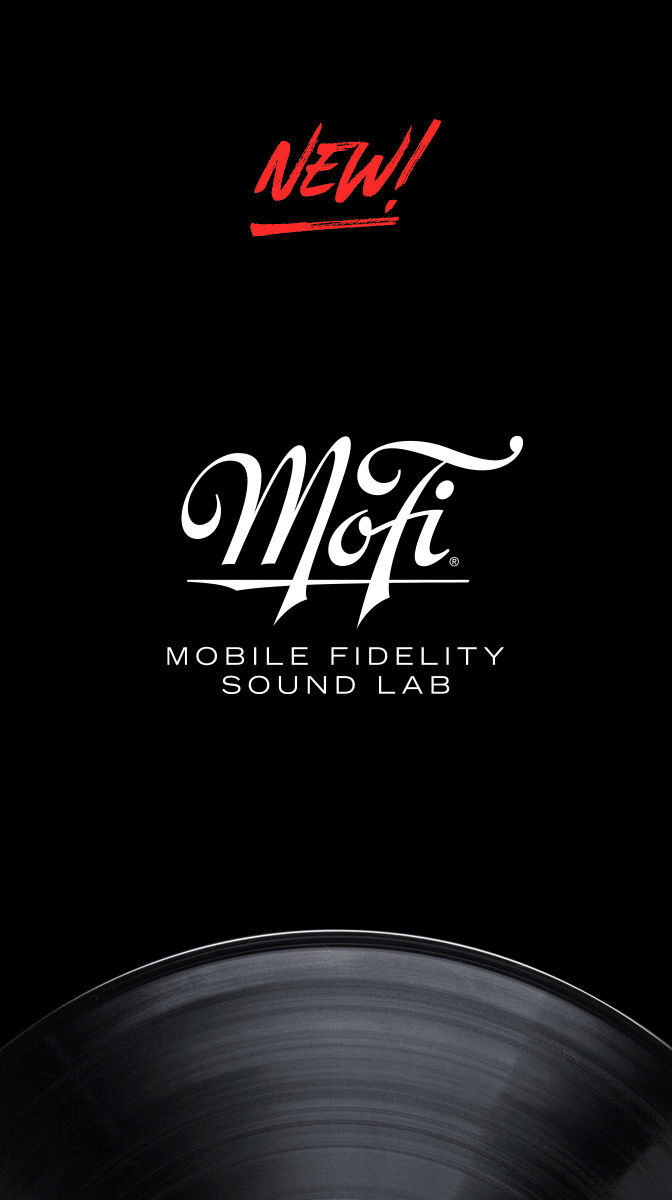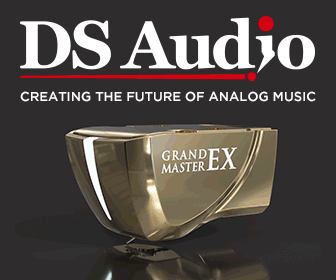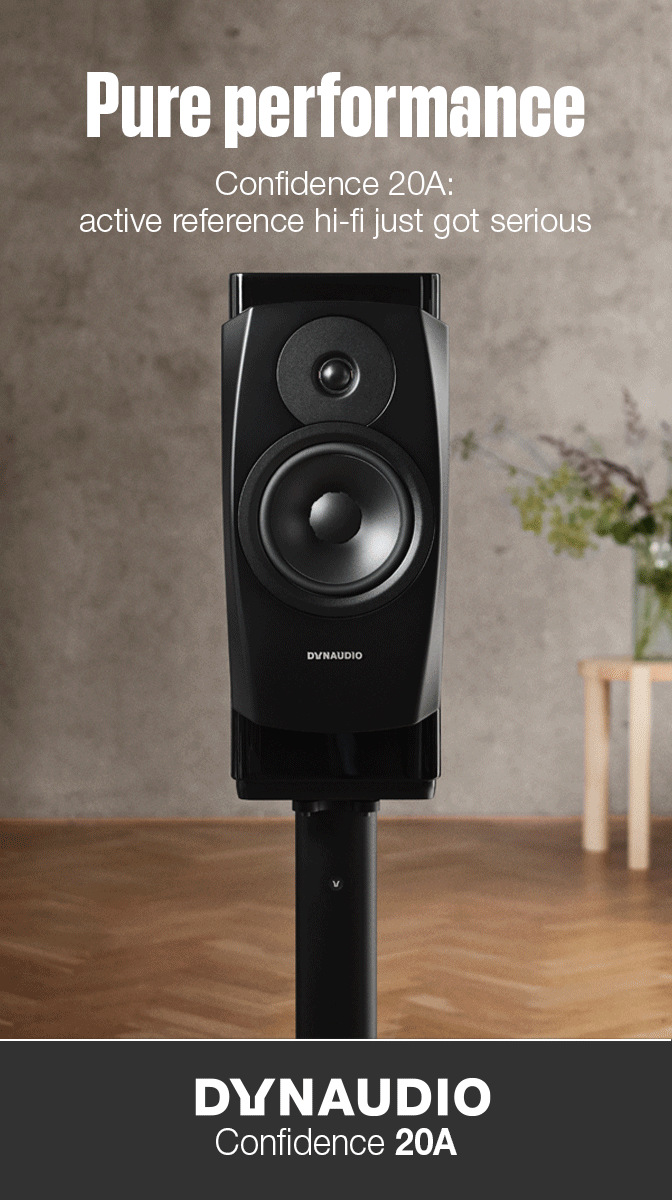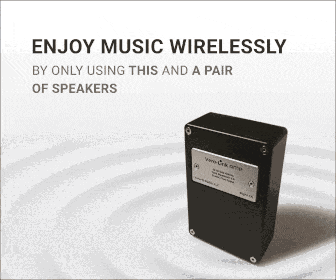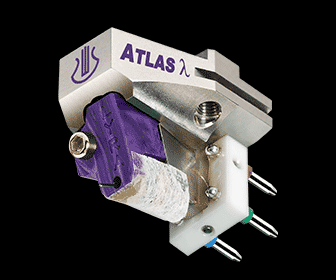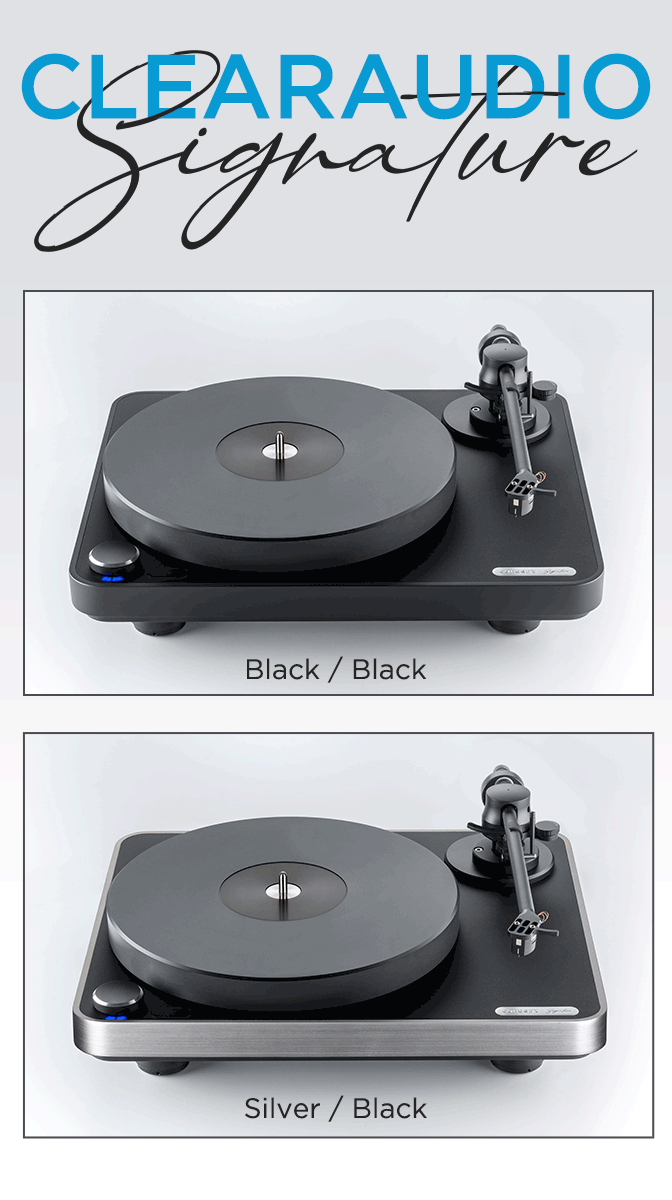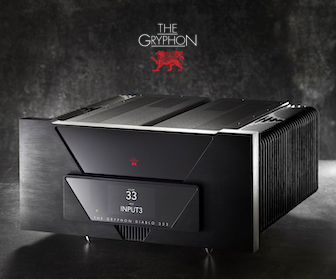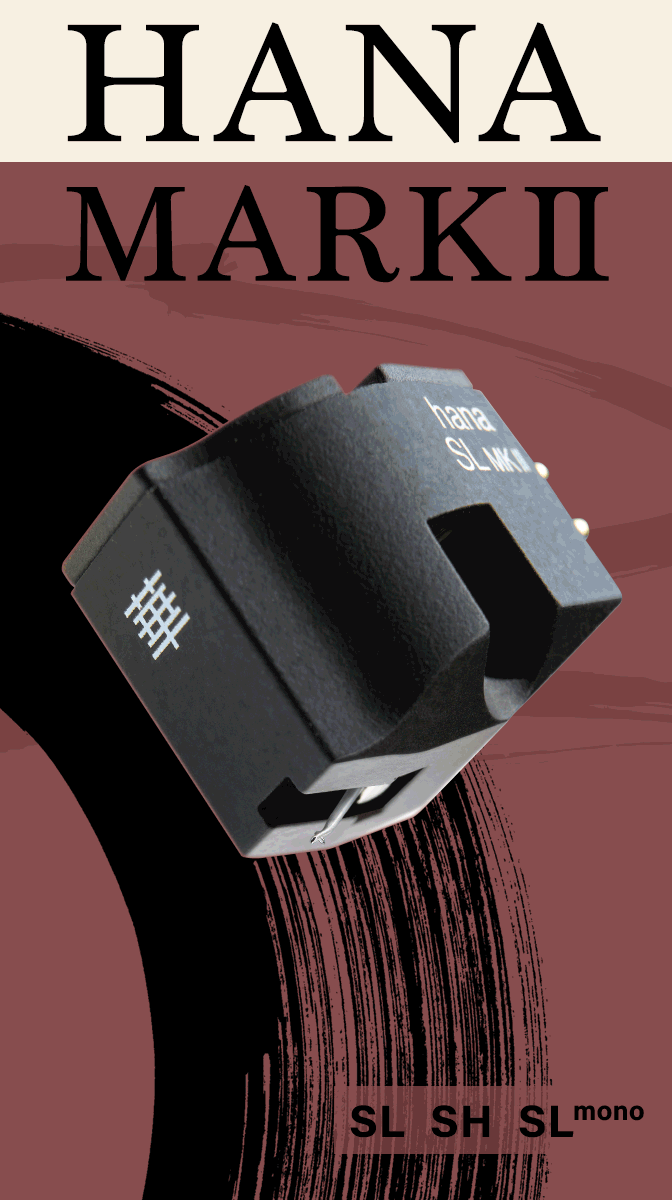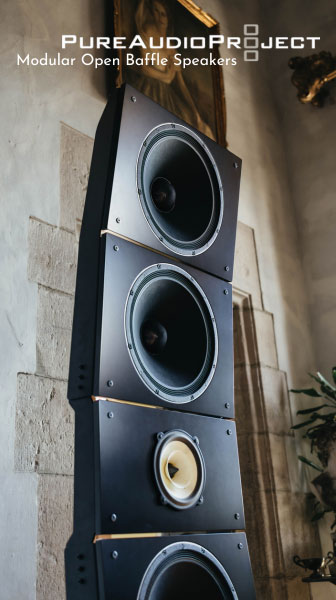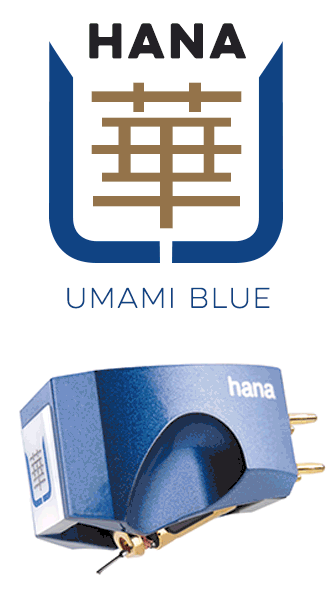Audio-Technica's AT-ART1000X "Direct Power" Cartridge Adds Midband Glory And Texture
a promise fulfilled
Costly, exotic phono cartridges are fun to write about and of course to listen to and own but they represent a tiny fraction of the business for large, "industrial grade" producers like Audio-Technica. Though most of the company's cartridge output centers on "bread and butter" models like the AT and VM 95 series, maintaining high precision, manufacturing excellence requires exercises in forward thinking design and execution. "Flagship" models affordable by the few are also critical for "brand identity". Cartridge buyers at the top of the analog food chain like to associate products with craftspeople and artisans not with machines. Also consider that Audio-Technica's entire cartridge operation accounts for but a thin slice of the company's revenues. That it continues pushing the cartridge envelope is testament to the company's commitment to the analog realm.
Not being solely dependent upon cartridge revenues for company survival benefits consumers because it helps make "top shelf" cartridges more affordable. Consider Audio-Technica's limited edition (now sold out) AT-MC2022. It featured the Orbray one piece diamond cantilever stylus that alone my sources tell me costs more than $2000. No wonder cartridges that use it can retail for $20,000 and up. Yet A-T managed to sell the MC-2022 for $9000. That's a genuine market disrupter. When vinyl seemed headed for the dumpster, Audio-Technica began manufacturing a line of automatic rice ball making machines for home sushi enthusiasts. It became and remains a successful product line, but hardly critical for cartridge brand identity!
It was always the dream of veteran Audio-Technica cartridge designer Mitsuo Miyata (who was already retired when I interviewed him during a 2016 visit to Audio-Technica almost a decade ago, see below) to introduce a "Direct Power" cartridge in which the coils mount directly above the stylus rather than being located behind the elastomer fulcrum, first introduced by George Neumann in 1962 as the DST 62. Later JVC's late '70s MC-1 followed through using a similar design. And today the costly Tzar DST line from Russia imported by Robyatt Audio uses the same design as the original Neumann (and tracks at up to 6 grams). Audio-Technica's approach is sufficiently different that the company applied for a patent.
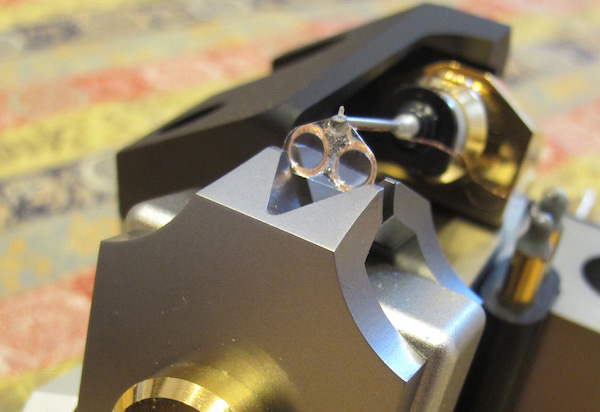 Image is of the original AT ART1000
Image is of the original AT ART1000
The AT ART1000 and The New ART1000X Are Similar But Not Identical
The least costly cartridges in Audio-Technica's extensive line are made at an A-T owned factory in China. The more expensive cartridges are manufactured in the company's Fukui, Japan facility built in the early 1970's. The original AT-ART1000 (and I assume the new X version) is built in a small corner of a large, multistory factory in Machida that mostly builds professional and consumer microphones and some headphone parts.
To manufacture Mitsuo Miyata's original design (I was able to watch but not film the process)—eight turns of ultra-thin (20µm diameter), enamel-coated, Pure Copper Ohno Continuous Cast (PCOCC) wire are hand-wound on a bobbin using a miniature coil-winder; the result is a nonmagnetic, air-core coil with an inner diameter of 0.9mm. A coil with a ferrous core produces greater output, but it's heavier, and has hysteresis and other problems that air-core coils don't. (Lower output is an air coil's main disadvantage.)
A tiny drop of alcohol is then applied to the wound coil. The alcohol melts the wire's enamel coating, which coats the entire assembly and then resolidifies, leaving a physically stable, perfectly round coil that can be removed from the bobbin without deformation.
The builder uses the coil-winder to produce these tiny coils in pairs, carefully dressing the long ends of the coil wires. She then carefully places under her microscope a tiny, stiff piece of transparent film into which have been manufactured ("not machined," I was told, though I was not told how it was made or by whom, both of which remain top secret) circular grooves angled at 45°/45°, and straight pathway grooves for the coil leads.
The builder must then precisely maneuver the coils into the circular grooves. There is no margin for error. Once the coils are in place, she then adds a special adhesive, which affixes the coils to the film. If one coil moves before it's adhered to the film, the whole thing has to be tossed out and she must start over again.
Once the manufacture of the film/coil assembly is complete, it goes into a special jig, after which an assembly comprising a 0.26mm-thick solid boron cantilever and a 1.6µm x 0.3µm fine-line-contact stylus (this looks similar but not identical to what Lyra uses in its Etna and Atlas cartridges) is carefully placed atop the film, stylus pointing up, the stylus shank's top cradled in a notch in the film.
The builder then very carefully applies a small amount of adhesive to affix the stylus shank's crown to the film. The angle then formed by the film-and-coil assembly and the stylus must be spot on, or the coils will not sit centered in the magnetic gap of the neodymium magnet directly above. Nor is there any room for azimuth error in the placement of the stylus shank in the film groove, or the entire coil assembly will be lopsided in the gap.
Next, this assemblage goes into another custom-designed (by Miyata) jig that places the rear end of the cantilever into the stopper pipe, which is then affixed with a tiny grub screw as the multilayer circular damper is pressed into place on the cantilever.
Then comes the difficult task of dressing, flattening, and affixing the tiny coil wires to the top of the cantilever, after which the stopper pipe is mounted on a fixture attached at the back of the cartridge's titanium body. Finally, the thin coil wires are attached to terminal posts, two on either side of the cantilever assembly.
When I visited the factory one specially trained, steady-handed, even-tempered young woman performed all of these tasks, knowing that one mistake in the long chain of tasks means it all gets tossed and she must start over. All of which explains why back then Audio-Technica says it could annually produce a maximum of 200 AT-ART1000s for $5000 apiece.
The design's unique architecture means that each one must be mounted and tested to be sure it meets published specs and while most cartridges have a VTF range, the ART-1000's is precisely specified and the number is somewhat different for each one. My original ART1000 was spec'd at 2.5 grams.
At an event held over the summer at Technica House in New York City, Yosuke Koizumi, chief engineer for cartridge design, explained the goals for the new AT- ART1000X. If you watch the video below I posted on my previous endeavor's YouTube channel following the 2016 visit you will see Koizumi-san sitting on the right. He looked far younger than his 36 years and he still does! During my visit he brought to the factory some of his awesome E.P. collection.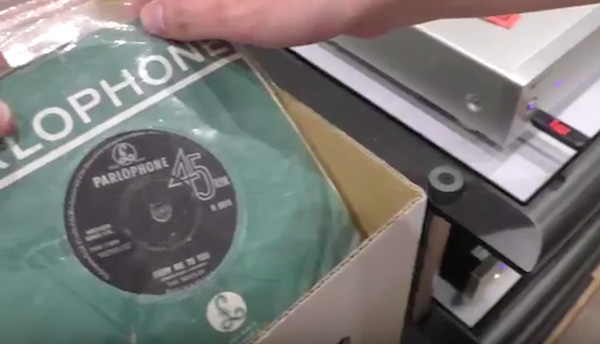
The new X model features a new coil shape that helps produce higher output (.22mV) compared to the original's .2mV. Designer Koizumi says also that he found the original a bit "cool" sounding and that the new 1000x has a richer overall sound, particularly in the midrange (he talks about it in the embedded video but some might have trouble understanding his English—it took me a few plays to catch all the words). Another change is that the cartridge mounting holes are now threaded instead of requiring locking nuts. That's a big improvement for the fumble fingered!
The original 1000 cost $5000. The new 1000x costs $5500, a small increase considering the update and the passage of 8 years. Because assembly is so painstakingly precise, Audio-Technica can only produce about one of these cartridges per day so they will be in short supply. The annual yield is up from the estimated two hundred annually for the original model. Note: Because of the manufacturing difficulties, a "re-tip" of course must be done by Audio-Technica and the cost is about 65% of a new AT-ART1000X.
The designer in his presentation said that in addition to the greater output, the sound has gone from a bit cool to "body temperature", though the measured frequency response is little changed. This additional "warmth" is a trend seem across many brands and in every case that I've reviewed, I found it an appealing change for the better. But what about the ART-1000X?
Advantages and Disadvantages of "Direct Power"
Generating the signal directly above stylus movement makes obvious sense as do the theoretical benefits. By the time the modulation in the groove gets to coils mounted behind the fulcrum within the cartridge body, those coils deflect a shorter distance compared to ones mounted directly about the stylus, which means less generated output. Errors get magnified similar to how set-up errors on a 12' arm are magnified compared to a 9" one. The trade-off is the added mass placed directly above the stylus. However if you think about mass and effective mass, placing the mass at the end of the fulcrum within the cartridge body probably produces an effective mass far greater than the added mass atop the stylus, especially given how light in weight this air coil assembly appears to be and probably is.
Installation And Set-Up
A quick apology to A-T for how long this review has taken. There's been "turntable turmoil" around here that's finally totally resolved. I first installed the 1000X on the SAT CF1-12 arm on the OMA K3 prototype. My cartridge sample is intended to track at precisely 2 grams and that's where I set it. Because of the stylus's position within the cartridge body and the surrounding magnetic structure, setting zenith angle is difficult. Eying the cantilever is difficult, but doable. With the arm parallel to the record and the head shell also parallel to the record, the SRA was 93 degrees and channel balance and separation were as spec'd below. Off to a good start!
I was using voltage-based phono preamps back in 2016 when I reviewed the original AT ART1000 and the results were outstanding. This time using a transimpedance input on the CH Precision P10, neither voltage nor loading were issues given the cartridge's low 3.5Ω internal impedance. I did run it into a voltage input as well and got similar sonics, though I preferred the current source input. And consider that though the output is slightly greater than the original's it's still low so the AT-ART1000X is best used with a very quiet voltage based phono preamp or preferably with a good step up transformer.
Later, more recently, I installed the ART1000X on the newly purchased Wilson-Benesch Prime Meridian turntable. Other than the omission of the pneumatic suspension system, it's the same as the Wilson-Benesch Prime Meridian turntable I recently reviewed for The Absolute Sound. At the end of the review period there was an issue with the suspension system so I had to disengage it and on my concrete floor I heard no differences so instead of that mechanism the Prime Meridian uses an elastomer based isolation system at a considerable saving and I can always add it later if need be.
Both turntables are direct drive and while the OMA's speed stability and accuracy is probably as good as has ever been achieved in a turntable and its dynamic capabilities were equally outstanding, and it made the beloved Continuum Caliburn sound as if it was running slow, it also had an unrelenting and thin quality, and it never "got down" into the lowest levels of quiet—I don't know how else to put it. When the GMT arrived I heard what I was missing and looking for and made the switch. Still the OMA is a "world class" turntable and I suspect it's a better fit in a tube-based system. Now I understand OMA is marketing a version of the motor for Neumann lathe turning. That makes sense to me.
Sounds X-actly as I Thought it Might
In my rightly over-the-top review of the original ART1000, I wrote "...rim-drive–like punch and authority; lightning-fast, super clean transients; and transparency that made many "normal" cartridges sound milky or foggy in the midrange. If you like a soft, warm, romantic sound, you might find the AT-ART1000 a bit in-your-face—but it wasn't at all bright, harsh, or analytical."
I know there are readers who take that as "pulling punches" about the cartridge's perhaps "analytical" midrange quality, but I didn't mean it as a pulled punch. Just that some listeners like greater midband warmth than the ART1000 offered. Without having both here, too much time has passed to make a comparison but immediately upon first listen, and without comparison to anything else, the ART1000X even before any sort of break-in, had an overall supple, texturally rich midrange quality and an attack delicacy that was immediately inviting. After a long time listening I'd never say "a bit in your face" about the 1000X, but nor would I say "somewhat soft and slow".
The ART1000X was immediately inviting and exciting and open and airy and three-dimensional in both imaging and staging, but I worried that with break-in it might sound too inviting for what I like, but fortunately that did not happen. It just got better: opening up and increasing in top to bottom depth and delicacy.
The sonic transition is similar to what happened when Lyra went to Lambda. Full force supple replaces even a hint of hard, etchy "analytical" or thin. Leading transient edges still have believable delineation, but are not overemphasized. The ART1000X maintains the original's "punch and authority" and its "special line contact stylus" (no radii specified) resolves detail and in that sense remains positively "analytical" with all of that resolution still there, Plus the frequency balance remains admirably neutral.
A record I kept coming back to is the ERC reissue of DECCA SXL 6426, Schubert Sonata in A minor for Arpeggione and Piano/Frank Bridge Sonata for Cello and Piano performed by Mstislav Rostropovich and the composer Benjamin Britten on piano (uncredited engineers: Gordon Parry and K.E. Wilkinson).

The original DECCA prices start at $730 and go way higher. The ERC is on Discogs for around $900. It originally sold for far less but of course went immediately out of print. The London edition with a different cover because London's Alan Steckler didn't like the Decca covers (he told me) but which is the identical pressing to the original DECCA will cost you around $100.00. Go figure. The U.K. pressed Londons remain among the best values in classic music collecting, in part because there are some knuckleheads who insist the Londons and DECCAs differ (they do not, other than the labels).
I had to look up The Maltings where the session was recorded (found that on Discogs). The recording's balance of instrumental immediacy and spatial presence is masterful and gives the impression of the two musicians appearing three-dimensionally and playing in a a modest sized room with a fast reverb time, and not a concert space. Sure enough it was the former West Hampstead Town Hall. Thanks to Google I learned that John Mayall recorded his Blues From Laurel Canyon (DECCA SKL4972) in The Maltings (obviously nowhere near Laurel Canyon) so next I pulled that out for a spin. That's what you do when a cartridge is delivering the pleasure.
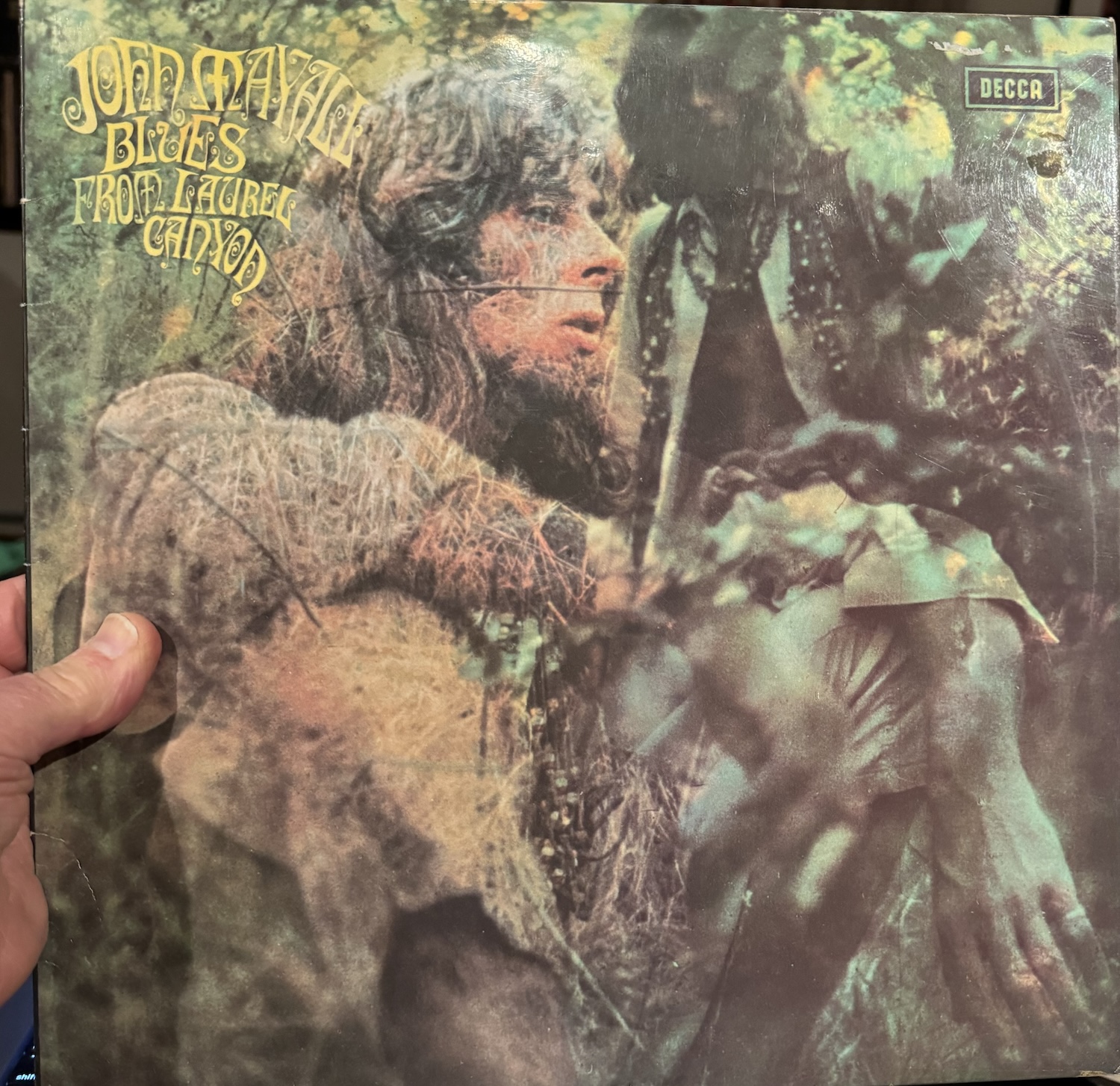
But before moving on to that I'll just say the cello sound and the textures produced by the ART1000X as Rosty forcefully drew the bow were shiver producing and deep. Britten's delicate keyboard touch was convincingly delivered as well. The cartridge is at once immediate and subtle.
The Mayall album with Mick Taylor on guitar includes a track called "Medicine Man" that cooks at well below a simmer and features a "Native American" drum motif recorded at a very low level that demonstrated the cartridge's macrodynamic finesse (though so did the Britten piano). Mayall's vocal transparency and image clarity was 'in the room' eerie.
For macrodynamic expression I chose a 2005 test pressing of the 2009 Analogue Productions double 45rpm reissue of The Power of the Orchestra (AAPC2659-45/VCS-2659) produced by Charles Gerhardt and engineered (again) by Kenneth Wilkinson probably recorded at Kingsway Hall and originally issued in 1962. The George Marino cut should sound somewhat bright and it did. And there are some big orchestral crescendos during "Pictures at an Exhibition" where you should be able to hear tape saturation and overmodulation and I did! But where it's good, it's dynamically and spatially impressive and it was! However, the earlier "Living Stereo" with Reiner and the Chicago Symphony is dynamically, spatially and timbrally superior IMO.
The ART1000X produced an expansive orchestral soundstage, wide and deep. It's a mid hall presentation so the image should set up well back in space and it did. With no obvious timbral, textural or transient glitches to interfere, the speakers (at one point the big Acora VRC and later the Wilson WATT Puppy 50th Anniversary) disapeared, leaving the illusion of an enormous space in my moderately sized room. Warm instruments sounded so as did the bright shiny ones.
The onslaught of Pablo reissues from AP continues and one is better than the next, well, or at least as good! This catalog, with its mostly black and white covers was a well kept secret for years and could be found in the bins for a few dollars each, even after Analogue Productions began reissuing them decades ago. Now all these years later, they seem to have finally found their audience as the new reissue series seems to be a success.
Count Basie with Ray Brown on bass and Louie Bellson on drums make for a swell trio on Kansas City Count Basie 3 "For the Second Time" (APJ 166). This is a spectacularly clear, present and transparent recording produced in1975 at Cherokee Studios in Los Angeles. A bright thin cartridge would make this record sound equally so. A warm one would tamp it down, make it very listenable but lose the excitement. The ART1000X is solidly "in the pocket" of this recording, delivering all the clarity and excitement. This is "fun jazz" for the heart not the head. The piano sound is clean and closely miked, you can feel Brown's fingers walking the bass and when he plucks with conviction at the top of the neck the room shakes, but with complete control and no overhang. Bellson's cymbals ring brilliantly with crystalline clarity. If they sound elevated or harsh it's not in the recording.
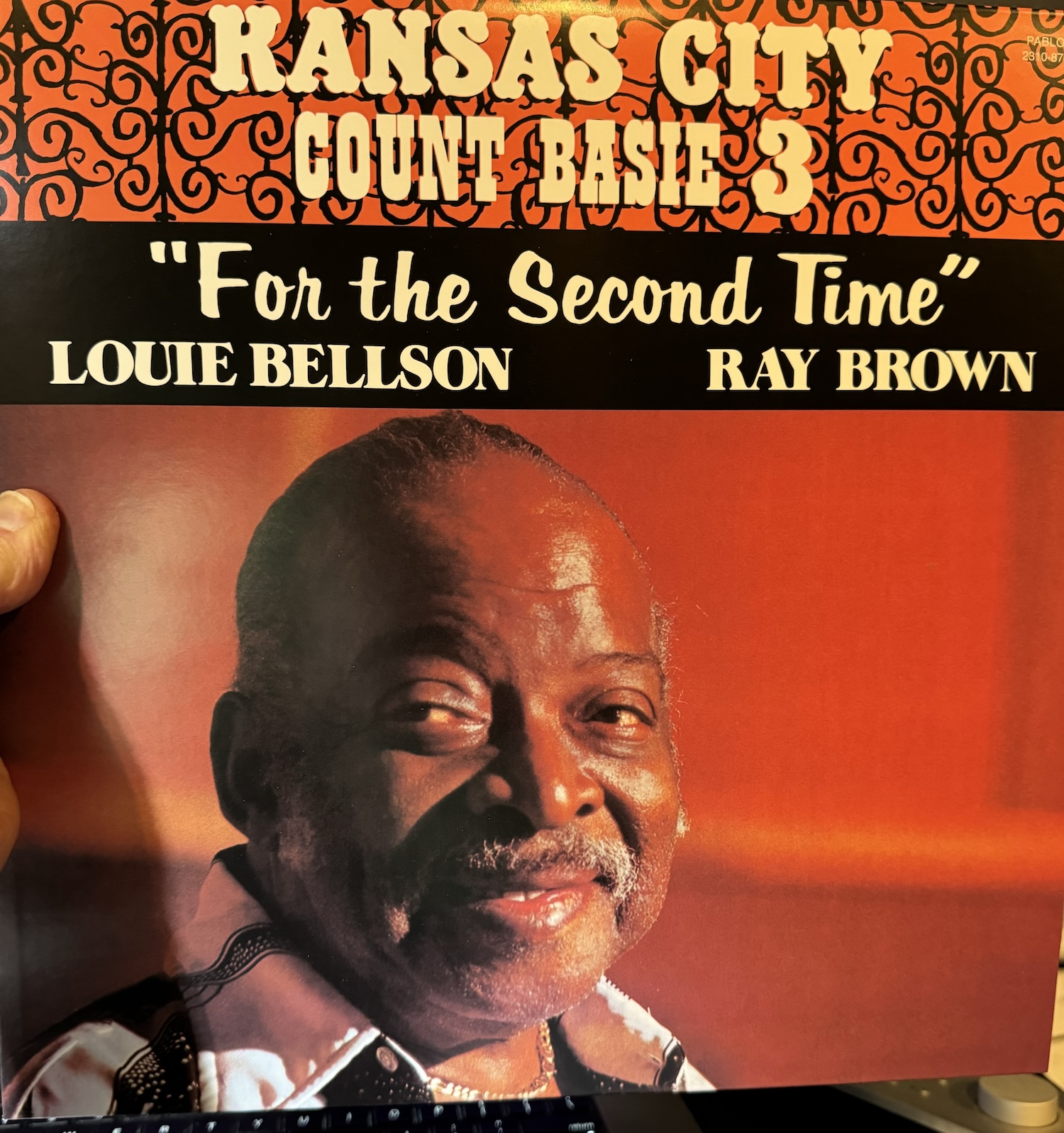
The ART1000X becomes whatever record it's asked to decode leaving very little if any character residue. In my world that's what a great cartridge should do. It shouldn't smooth over musical events or accentuated them.
To test rock, I played (with great pleasure) the new deluxe edition of Tom Petty And The Heartbreakers Long After After Dark (602465854954) a double set featuring a remastering of the original album and a second disc of extras remixed by Petty's long time engineer/confidant Ryan Ulyate who also gets producer credits here. Mastered by Chris Bellman from I don't know what and don't care. This sounds far better than my original pressing, particularly on bottom. The original was weak on bottom and somewhat spitty and crispy on top. The reissue gets it all correctly—well focused, pleasingly bright but not harsh and with no "treble overhang". No, it's not Damn the Torpedoes but it rocks, and the ART1000X also rocks it and gets the jangle correctly. Neither too brittle nor too soft. Just pleasingly fast and appropriately crispy. And behind it as always, and I should have mentioned it before, are very dark backgrounds. It's funny how the further rock gets in the rear view mirror the more valued records like this become.
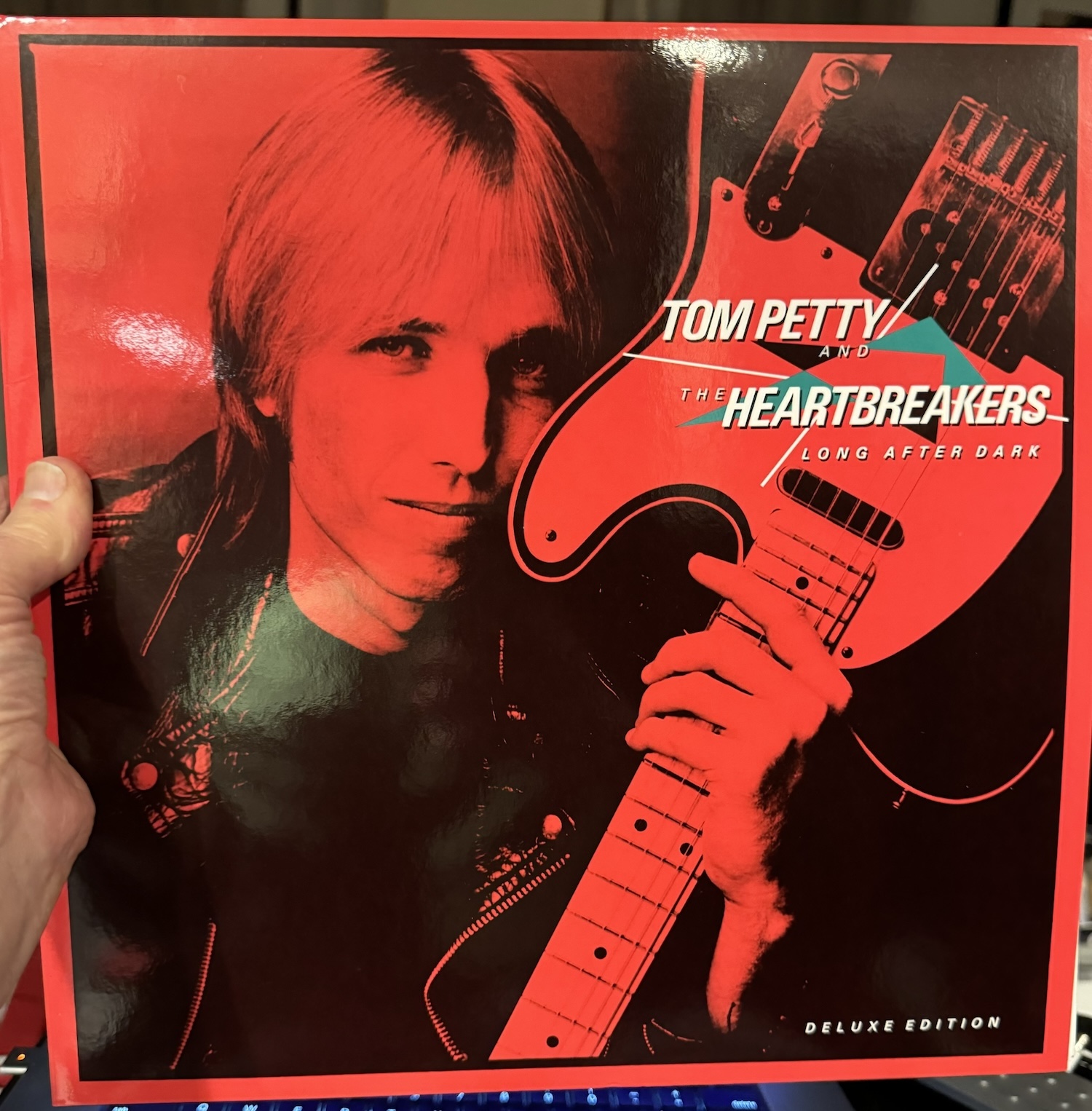
Finally. without doubt one of the most impressive playback performances was how the ART1000X delivered Bill Evans Some Other Time The Lost Session From the Black Forest (2XHDRE-V1044), a double 45rpm set that could be the best sounding Evans in the studio recording ever. The short lived trio featuring Eddie Gomez and Jack DeJohnette was recorded in the MPS Studio June, 1968 shortly after its previous only released recording, live at the Montreux Jazz Festival, but until recently it was never released. It's a gem and a must have for Evans fans. The story is another Zev Feldman special. As on the Britten piano recording, and the Basie too, the piano just sounds "right". The attack isn't so strong it produces "tinkle", the sustain is just right and the decay "melts" the note at just the right instant, leaving a creamy center, like hearing a live piano. The instruments have body, solidity and three-dimensionality. It just sounds right. And I'll leave it there.
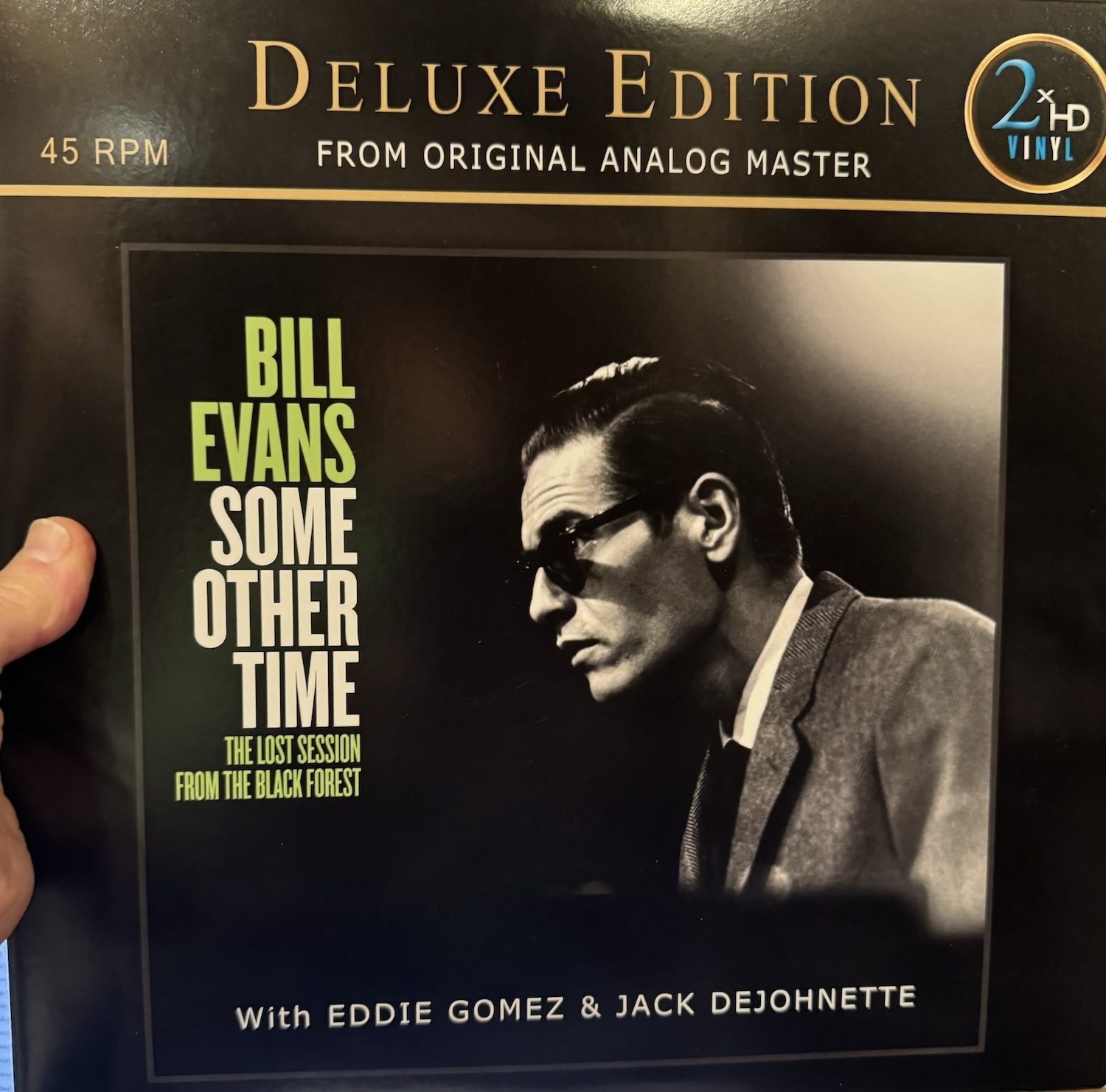
Conclusion
Given the still relatively low output, to get the most from the AT ART1000X I'd be sure to have a very quiet voltage gain based phono preamp, or use a step up transformer or have a transimpedance phono preamp. With any or all of those you're sure to fall for this skillfully voiced second generation ART1000 "Direct Power" cartridge. Yes, it's "fast" and as "direct" as the tech suggests, but it never asserts its character and instead gets out of the way as well if not better than most cartridges currently available that I've heard. If you get a listen I challenge you to define its tonal character, or its transient character and more to the point, can you hear any flaws or deficiencies whatsoever? Because I didn't.
I'm not saying it's the best cartridge in the world because there are others in the same sonic league that manage more in various categories but at a much higher price! For instance and somewhat ironically, the no longer in production AT MC2022 that I had on an SAT head shell and so was able to insert within minutes, clearly has greater dynamic slam but in terms of giving you an awful lot of every quality you would want in a cartridge capable of giving you great pleasure from every musical genre, the ART1000X is a tough act to follow, especially for $5500. I know that's a great deal of money, but even if you have to put it on a card, once you hear it you won't regret the purchase, I do not think. I returned the original review sample. I'm buying this one!
Specifications
Specifications
Cartridge & Stylus | |
|---|---|
Frequency Response | 15 - 30,000 Hz |
Channel Separation | 30 dB (1 kHz) |
Vertical Tracking Angle | 19° |
Vertical Tracking Force | Refer to “Tracking force information” included in the box. |
Recommended Load Impedance | ≥ 30 ohms (when head amplifier connected) |
Coil Impedance | 3.5 ohms (1 kHz) |
DC Resistance | 3.5 ohms |
Coil Inductance | ≤ 1 μH (1 kHz) |
Output Voltage | 0.22 mV (1 kHz, 5 cm/sec.) |
Output Channel Balance | 0.5 dB (1 kHz) |
Stylus Shape | Special line contact stylus |
Cantilever | 0.26 mm (0.010") diameter solid boron |
Static Compliance | 20 × 10–6 cm/dyne |
Dynamic Compliance | 9 × 10–6 cm/dyne (100 Hz) |
Dimensions | 17.3 mm (0.68") × 17.0 mm (0.67") × 25.5 mm (1.0") (H × W × D) |
Accessories Included | ・Case (wooden box) |
Threaded Hole | M2.6 × 2 |
Stylus Curvature Radius | 1.5 × 0.28 mil |
Type | Direct power system, non-magnetic core coil (MC) type |
Weight | 11 g (0.39 oz) |
Notes | For product improvement, the product is subject to modification without notice. |
SHOW LESS
Manufacturer Information
Audio-Technica U.S., Inc.
1221 Commerce Drive
Stow, Ohio 44224
Tel: 330-686-2600




